Wolfgang Buttress' beehive-inspired Expo pavilion relocates to Kew Gardens
The beehive-inspired pavilion created by artist Wolfgang Buttress for the Milan Expo 2015 reopens in London's Kew Gardens this weekend (+ slideshow).
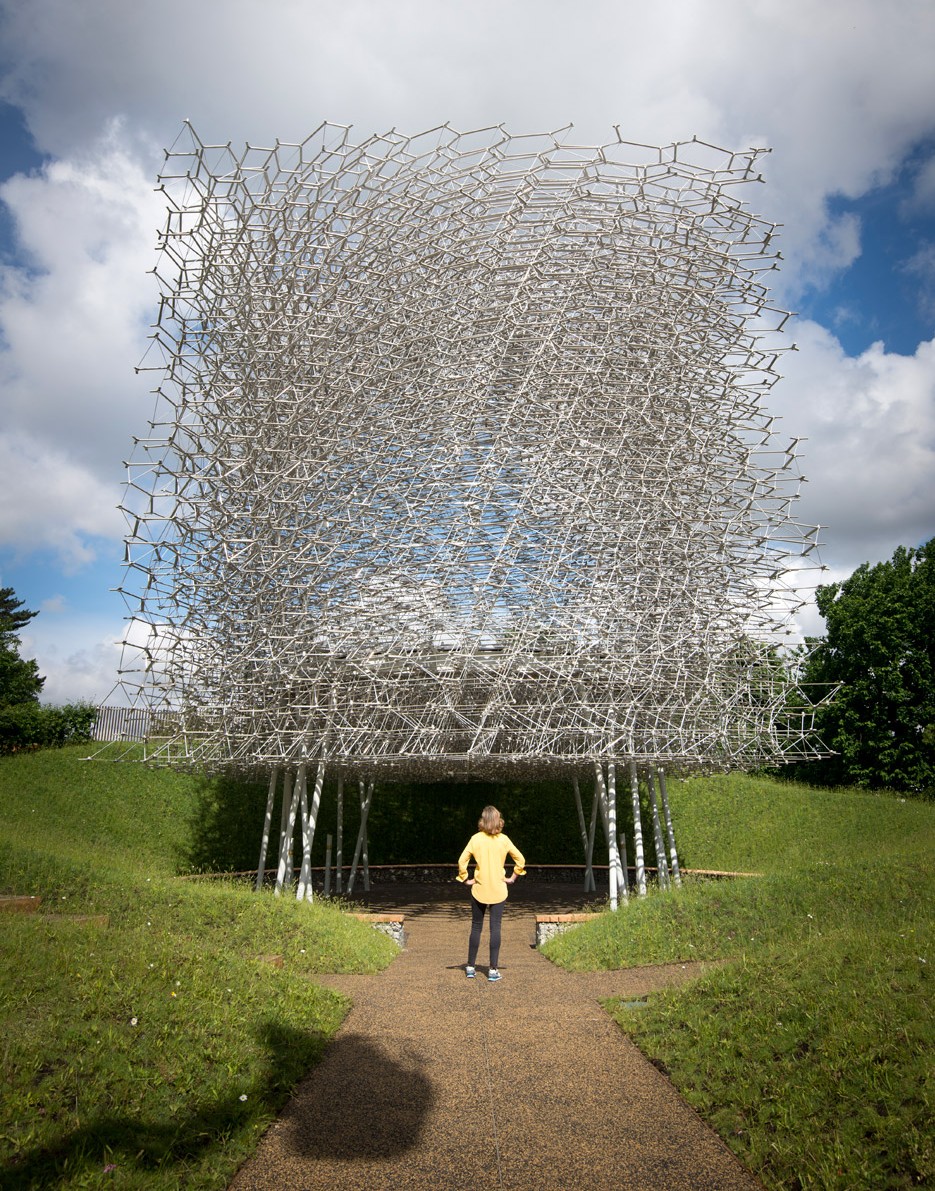
Themed around the lifecycle of a bee, The Hive features an elaborate metal honeycomb with an illuminated dome at its centre.
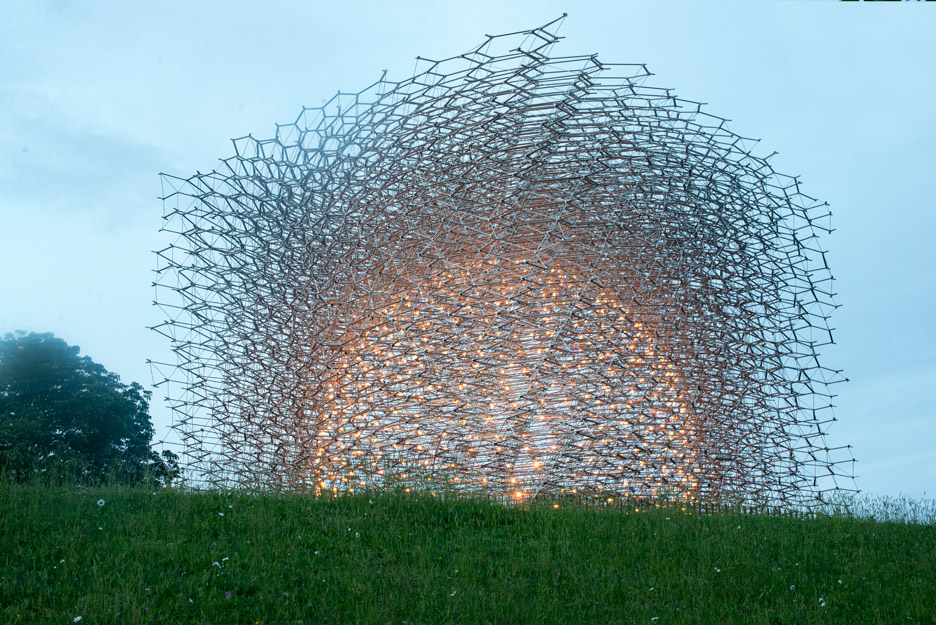
Buttress' installation was first created in Milan for the World Expo last spring. After the event ended in October, the 40-tonne structure was packed up and transported back to the UK.
It reopens in the Royal Botanic Gardens at Kew on 18 June 2016 – marking the first time the UK has ever rebuilt an Expo pavilion.
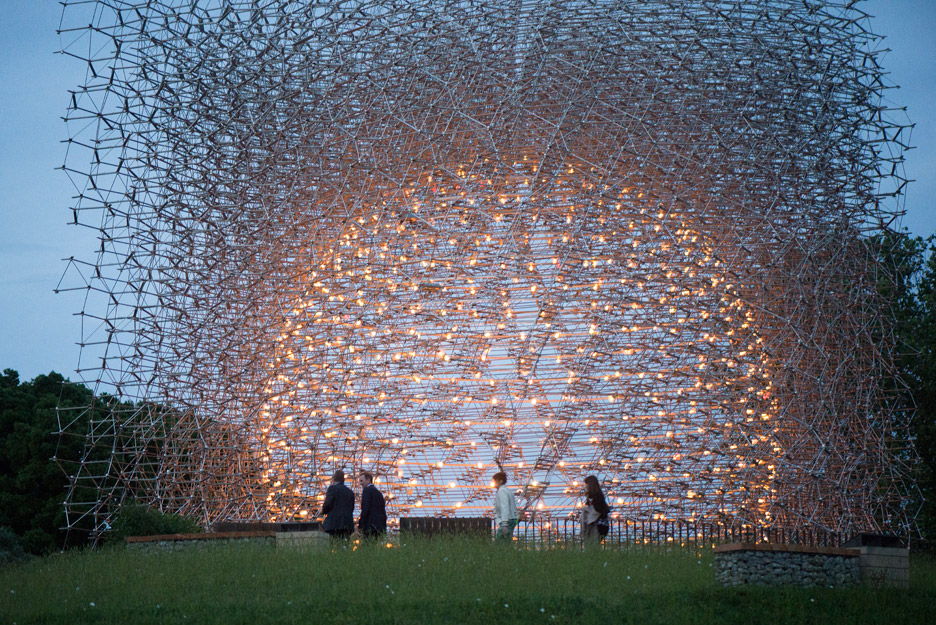
"It's fantastic to watch The Hive coming back to life at Kew," said Buttress, who is based in Nottingham. "The gardens offer the perfect environment to host this multi-sensory experience that integrates art, science and landscape architecture."
Buttress developed the project in partnership with designer and engineer Tristan Simmonds, and they enlisted the help of architecture office BDP and construction firm Stage One to make it a reality.
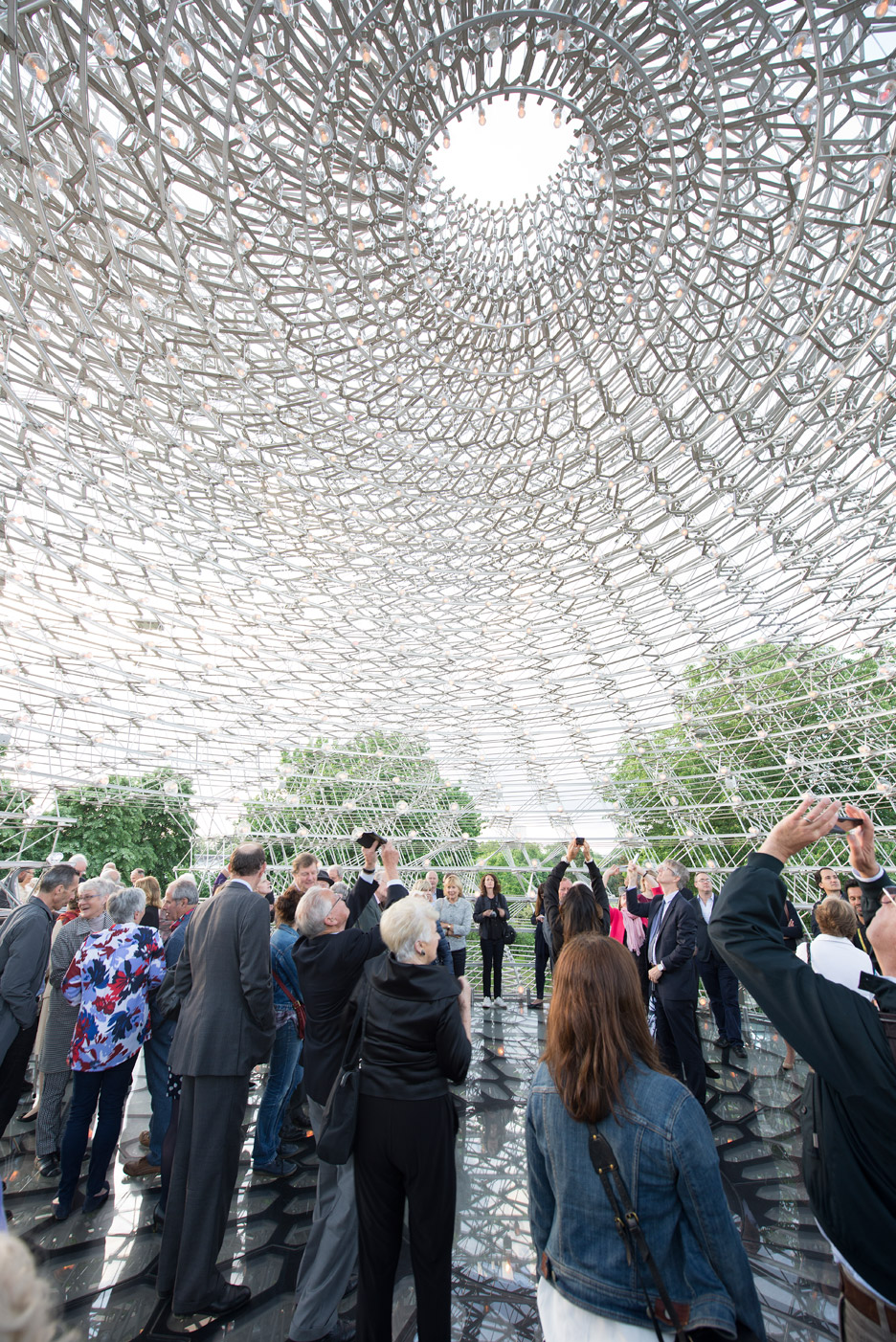
During the initial manufacture, Stage One etched each of the 169,300 pieces of aluminium and steel that make up the lattice with a reference number relating to its position. This made it possible to reassemble the structure at Kew.
The pavilion aims to help visitors understand the importance of protecting the honeybee – a species that has become increasingly threatened by changes to the UK countryside.
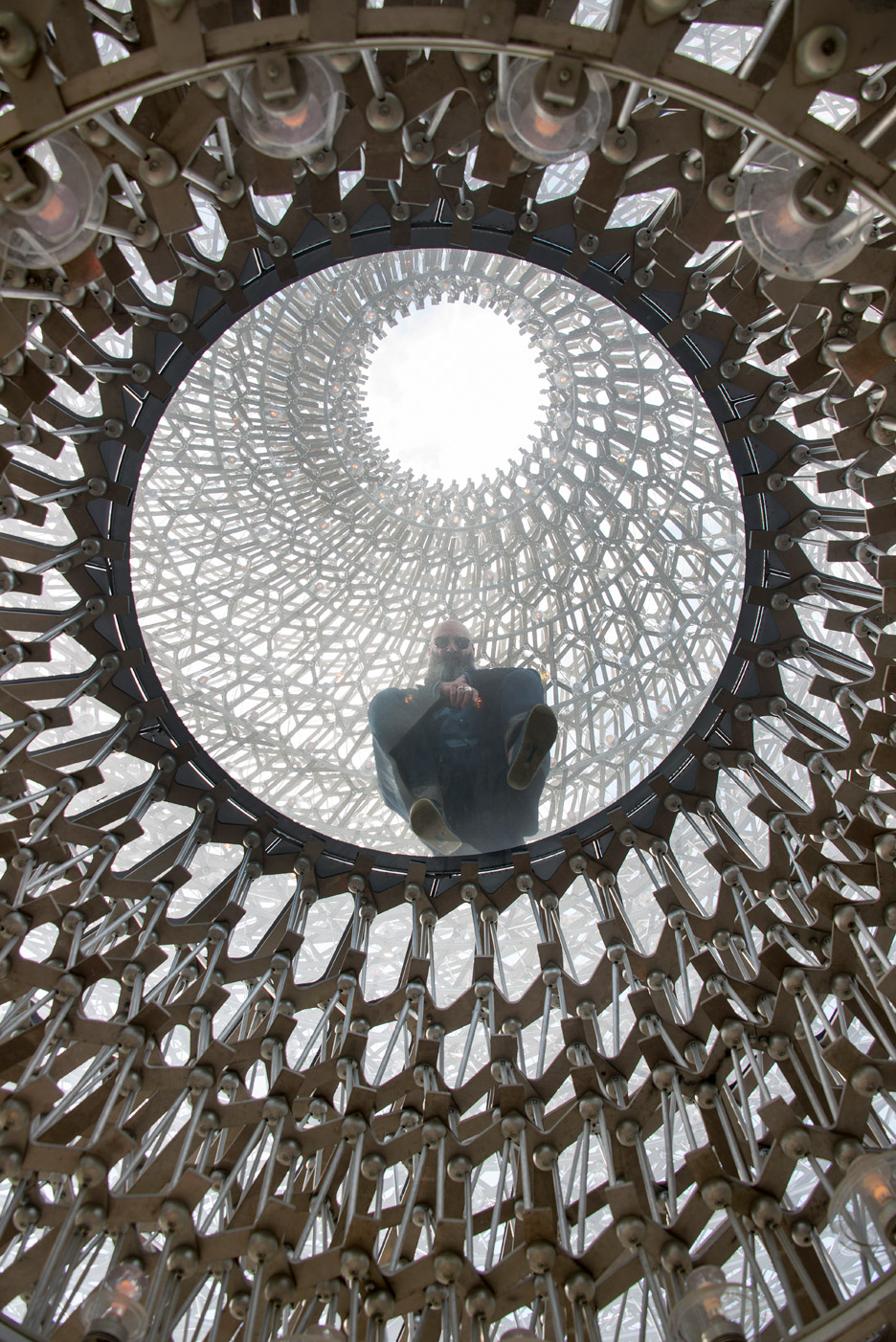
Pathways guides visitors both under and into the metal hive, which integrates pulsating audio and visual effects relating to a real bee hive.
During the Expo, changes in sound and light intensity were triggered by a hive in Nottingham, but they are now linked to the bee colony inside a hive at Kew.
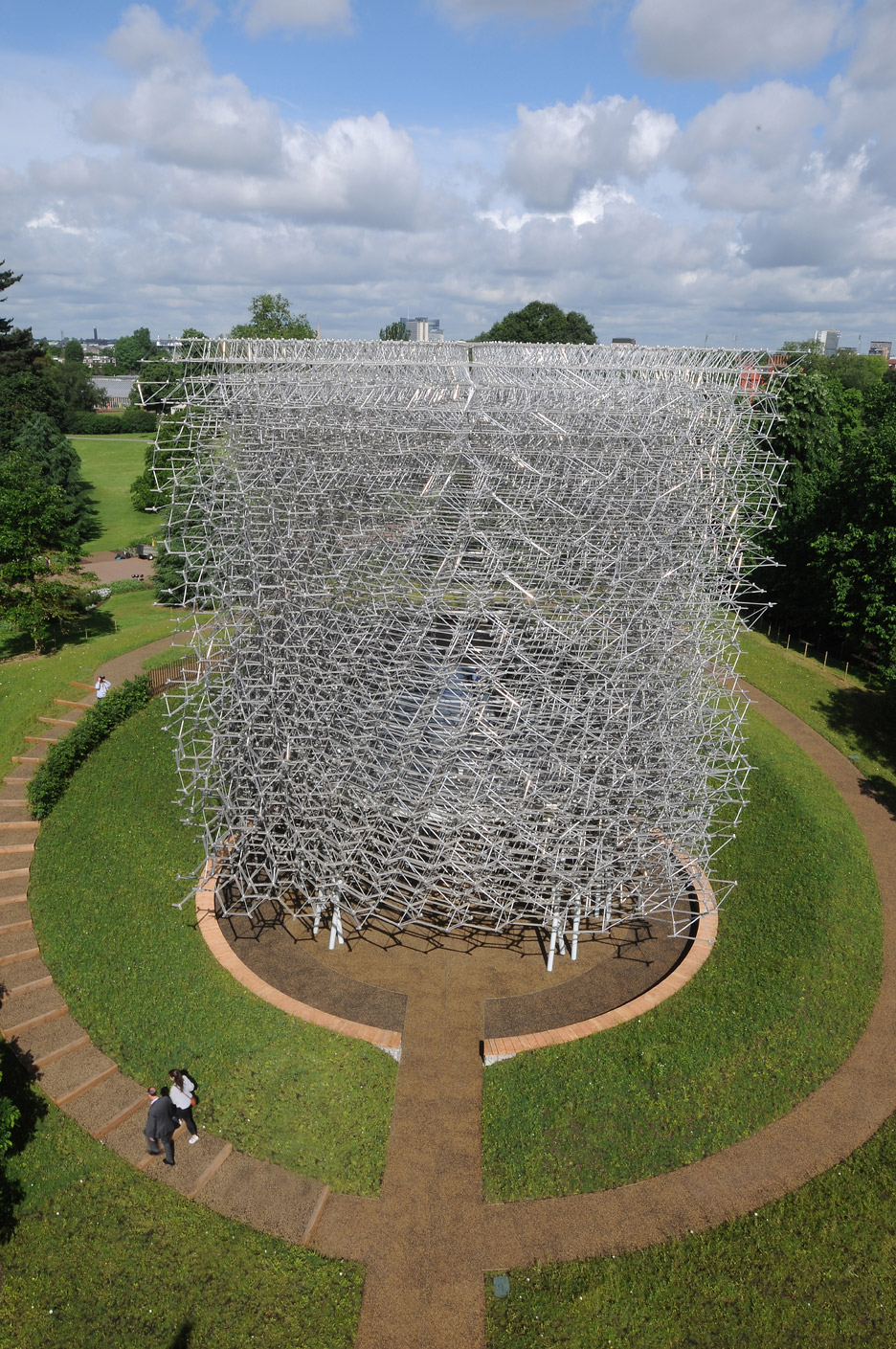
"I'm not an architect, I'm an artist, so I was more interested in the experience and in how you could convey an idea and a feeling through an experience rather than an object or a building," Buttress told Dezeen in an interview last year.
"The Hive creates a powerful, immersive space for us to explore the urgent issues we face in relation to pollinators, their intimate relationships with plants and their vital role in helping us feed a rapidly growing population," added Richard Deverell, director of the Royal Botanic Gardens.
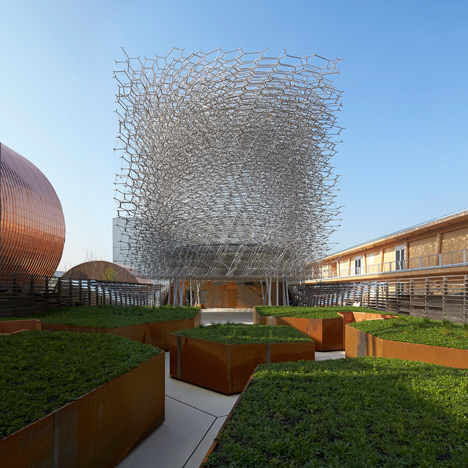
With more and more temporary pavilions built each year, the fate of these structures has become a more critical issue. Unlike previous Expos, many of the nations exhibiting in 2015 made plans to rebuild their pavilions elsewhere.
The Brazilian pavilion is set to be installed at a dog museum in northwest Italy, while the Chinese pavilion is being rebuilt in Qingdao, and the French pavilion is sitting in storage while a new home is found.
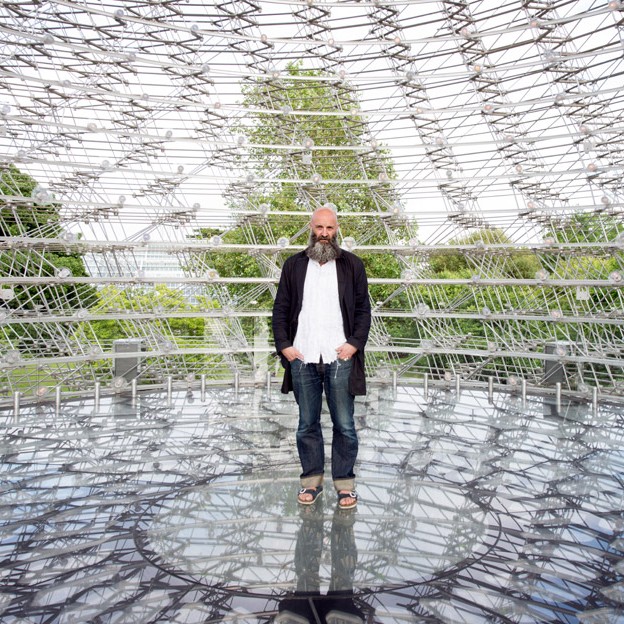
Thomas Heatherwick's pavilion for the Shanghai Expo in 2010 wasn't rebuilt – instead its fronds were divided up and donated to schools, museums and private collections across the UK.
Kew Gardens is slowly establishing itself as a hub for contemporary architecture. Other notable structures at the botanic gardens include a serpentine bridge by John Pawson, an elevated treetop walkway by Marks Barfield Architects and a laboratory by Wilkinson Eyre.
Photography is by Jeff Eden.